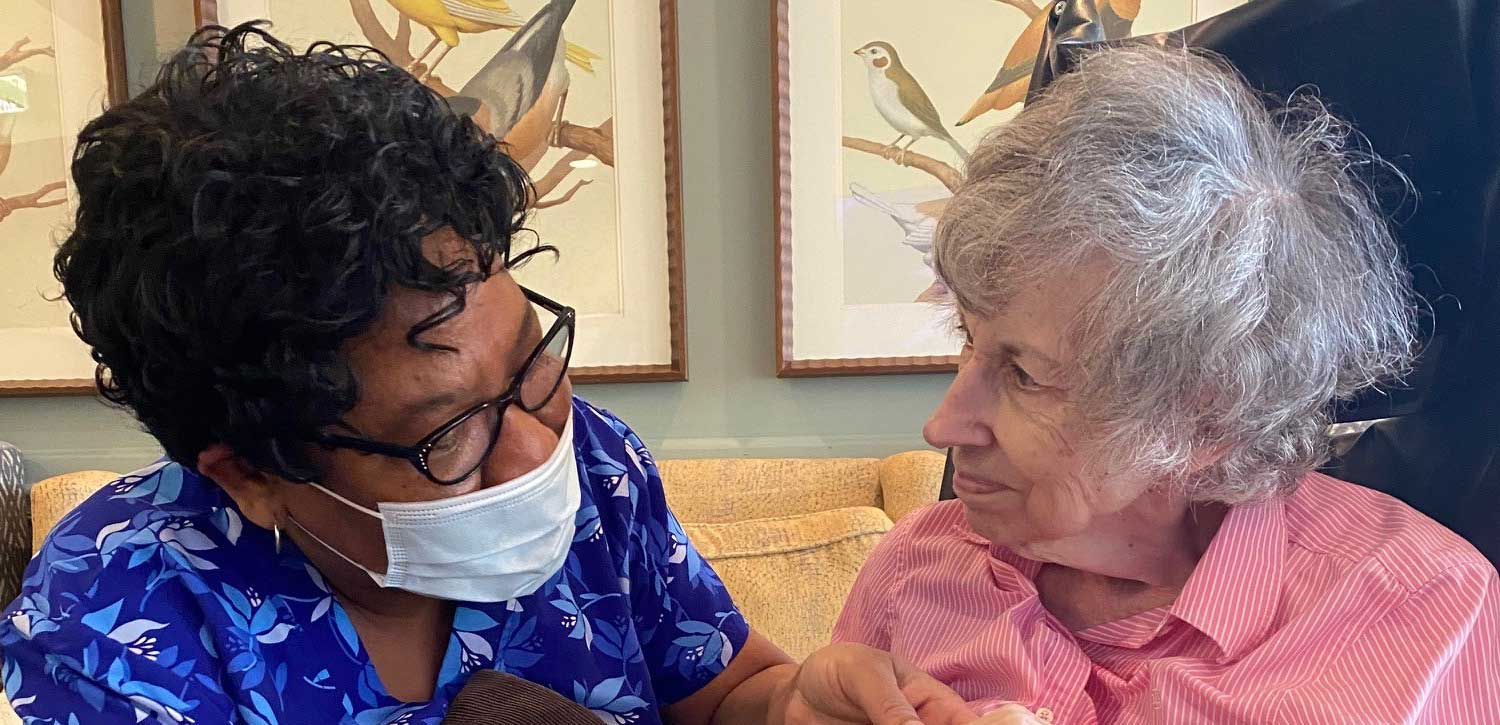By Beverly Theis, LCSW, Director of Resident and Family Support
Learning and developing effective communication requires active listening. Understanding both verbal messaging and non-verbal cues is key to improving the quality of life for a loved one with dementia. The disease directly impacts communication skills and misunderstandings can easily escalate into confusion, fear and anger. As the illness progresses and verbal messaging lessens, non-verbal cues become more important.
We created a list of 10 communication tips for dementia care.
Non-verbal communication tips
- Create a positive environment: Limit potential distractions by turning off the radio or television or move to a quieter location to get the person’s attention. Move calmly and smile.
- Make eye contact: Position yourself at eye level with them. If they are seated, sit at an angle to the side. Avoid sitting directly in front of your loved one because it can be perceived as intimidating.
- Use body language: Communicate through body language. Learn cues from your loved one that indicate wants and needs. For example, fidgeting in their seat may mean they need to use the restroom, putting inedible objects in their mouth may mean they are hungry, and being slumped over may mean they need to rest. Your body language is also important. Use facial expressions and gestures to get your point across. For example, give cues on how to drink water or how to put eyeglasses on by pretending to do these actions yourself.
- Touch: A gentle touch, pat on the back or hand holding communicates comfort and assurance. Always ask permission to hold hands before doing so.
- Play music: Music has been shown to reduce stress and improve mood. Select music that is familiar to them and from a source without commercial interruptions. Encourage movement by tapping your feet, clapping or patting your lap.
Verbal communication tips
- Speak clearly: Always approach from the front and introduce yourself when entering their space. State your message clearly with simple words and simple sentences. Always respond in a positive tone with affection.
- Limit questions: Ask one yes or no question at a time. Avoid asking too many questions, giving too many options or asking questions that rely on short-term memory. Use visual prompts to clarify your question and guide a response. You may need to repeat or rephrase the question. Be patient – an answer may take some time.
- Break down activities: Simplify tasks and activities by breaking them down into a multi-step process. For example, putting on shoes should be communicated one step at a time.
- Distract and redirect: If your loved becomes upset or agitated, try changing the subject or environment or suggest a walk and connect with them. For example, “I see you’re feeling sad, I’m sorry you’re upset. Let’s go get something to eat.”
- Live in their world: Avoid trying to convince them they are wrong. If they think they are staying at a B&B and talking to the head chef or back in high school getting ready for the big dance, then that is their reality for that moment. Just go with it.
Keep in mind, how you say something (verbal or non-verbal) is often more important than what you say.
Learn more about communicating with individuals living with dementia by viewing this video in our caregiving educational series.

